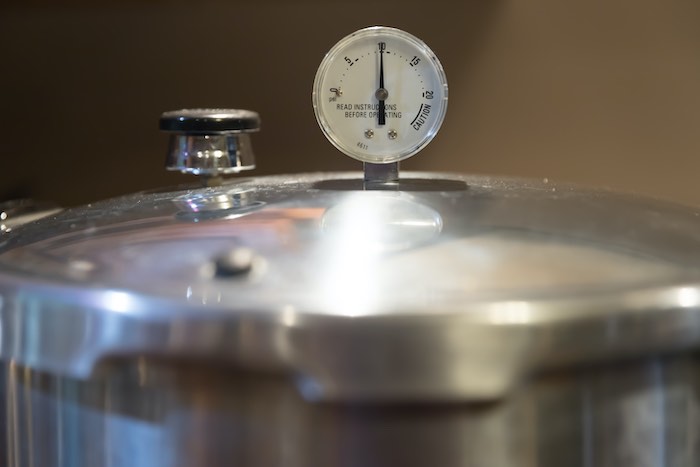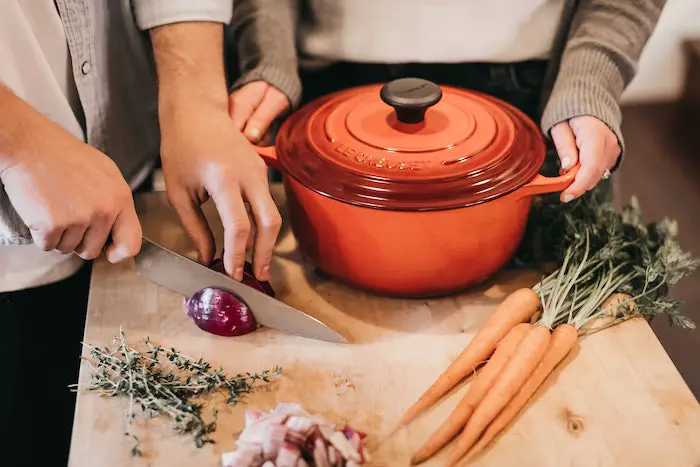If you are a knife fanatic, two knife materials you’ve likely heard of are SG-2 steel and VG-10 steel. To a novice, these two steel types are very similar and may even be nearly impossible to distinguish from one another. That being said, there are actually some differences between these two types of steel.
Most importantly, SG-2 steel is a powder metallurgy steel, making it harder than the VG-10 option, which is not powdered. Still, both of these steels are very strong, dependable, and sharp. The SG-2 steel also tends to be more expensive.
To learn more about these two knife materials and how they differ from one another, keep reading below. In this article, we provide an overview of both steel types, their differences, and which one you should get.
SG-2 Steel vs. VG-10 Steel Knives
SG-2 steel and VG-10 steel knives are very similar and perform almost identically. The reason for this is that both of these are high-carbon steel knives, resulting in them both having significant hardness and toughness. The main difference between the two materials is their powdered elements during the manufacturing phase.
What is SG-2 Steel?
SG-2 steel is a powder metallurgy steel produced by a Japanese knife maker primarily for kitchen-related purposes, but it is sometimes used for other purposes as well. SG-2 steel stands out because of its ability to hold low-angle edges well thanks to its incredible strength.
Its strength comes from its high-carbon stainless steel composition: it is 1.25%-1.45% carbon. Other materials in this knife type include vanadium, chromium, molybdenum, manganese, phosphorous, and sulfur. This durable composition allows the knife to reach to 64 on the Rockwell Hardness Scale.
In addition to being very tough, SG-2 steel is also often decorated and attractive. As a result, most SG-2 knives are incredibly expensive, making them a relatively uncommon knife type in residential kitchens. Nevertheless, SG-2 steel knives stand out for their hardness and their stunning appearance.
What is VG-10 Steel?
VG-10 steel is also a high carbon stainless steel, but its carbon composition is only about 1%, meaning it has less carbon than the SG-2 variation. It also is not a powder metallurgy steel, unlike the SG-2. This steel type is best, however, when it comes to anti-corrosion and prolonged edge retention.
The composition of the VG-10 steel includes carbon, molybdenum, chromium, vanadium, and cobalt. Because this steel is so similar in composition to the SG-2, it is incredibly strong and has quite decent edge retention as well, though it isn’t quite as strong as the SG-2. The VG-10 has a strength rating of about 61 on the Rockwell Hardness Scale.
By comparison to low-end knives, VG-10 steel is a bit expensive, but it is nowhere near as expensive as any of the more high-end knives on the market. As a result, VG-10 steel is a great mid-range knife for those on a budget or those just beginning their venture into knife collecting.
What’s the Difference Between SG-2 Steel and VG-10 Steel?
The main difference between SG-2 steel and VG-10 steel is that the former is powdered. All powdered steels are made by using the powders of the elemental compounds and mixing them thoroughly so that the final product has superior strength.
In other words, SG-2 steel and VG-10 steel are both incredibly powerful materials, but SG-2 steel is better mixed and is more alloyed, resulting in a greater toughness and hardness than the VG-10. This greater hardness also results in better edge retention than its similar competitor.
Because SG-2 steel is more powerful and often more decorated than VG-10, you can also expect the SG-2 steel to be more expensive as well.
Should I Get SG-2 Steel or VG-10 Steel?
Even though there are differences between SG-2 steel and VG-10 steel, both are very hard and durable. For most users’ purposes, both of these steel types are strong, have good edge retention, and don’t have any issues during sharpening. In fact, many people won’t even be able to tell the difference between the two.
With that in mind, you should get the SG-2 steel if what you are wanting is the absolute hardest option of the two. SG-2 steel has slightly better edge retention and hardness due to its superior powdered mixing process during manufacturing. It truly is a fantastic knife that professional chefs will benefit from using.
At the same time, VG-10 steel is still a great choice for various purposes. It is highly dependable even though it doesn’t have powdered mixing involved in its production. Although the VG-10 steel will not have as reliable edge retention by comparison to the SG-2 steel, it is a good knife for professional cooking as well as home cooking.
Additionally, you should probably select the VG-10 steel as well if you are concerned about price. Even though it is still expensive in comparison to low-end metals, it is typically more affordable than SG-2 steel.
Related Questions
Is SG-2 steel or VG-10 steel better?
Technically speaking, SG-2 steel is better than VG-10. It scores higher on the Rockwell Hardness Scale, resulting in more hardness and better edge retention. If you are looking for the best knife outright, however, the SG-2 should be your pick.
Is there a noticeable difference between SG-2 and VG-10 steel?
Even though SG-2 steel is harder than VG-10, there is very little noticeable difference between these two steel types. Both are hard, with VG-10 only scoring 3 points lower than SG-2 on the Rockwell Hardness Scale. Especially to novice enthusiasts, it can be difficult to distinguish between the two knife types.
How much carbon is in SG-2 and VG-10 steels?
SG-2 has about 1.25% to 1.45% carbon, whereas VG-10 steel has only about 1% carbon. This makes both of these steel types result in you purchasing a high-carbon knife either way.
See Also:
Hammered Vs. Non-Hammered Knives
How To Remove Black Stainless Steel Coating
How Many Tamales Fit In A 20 Quart Steamer?
Is SodaStream Worth It For Sparkling Water?



